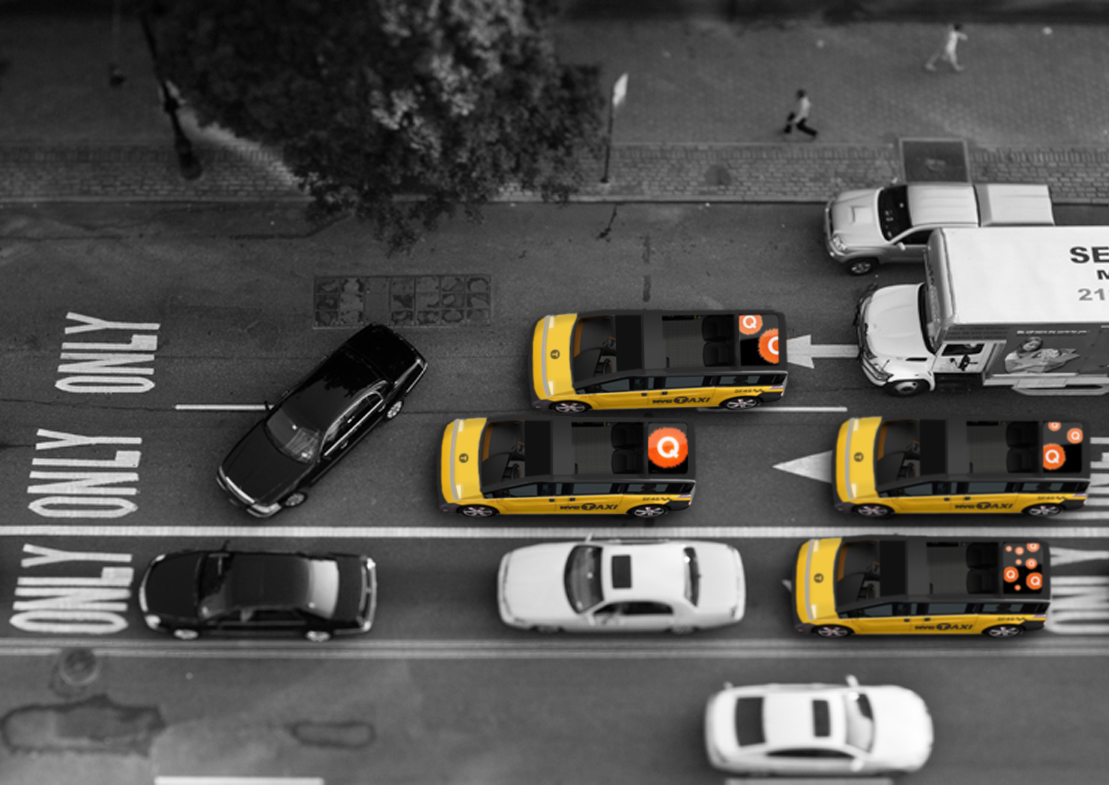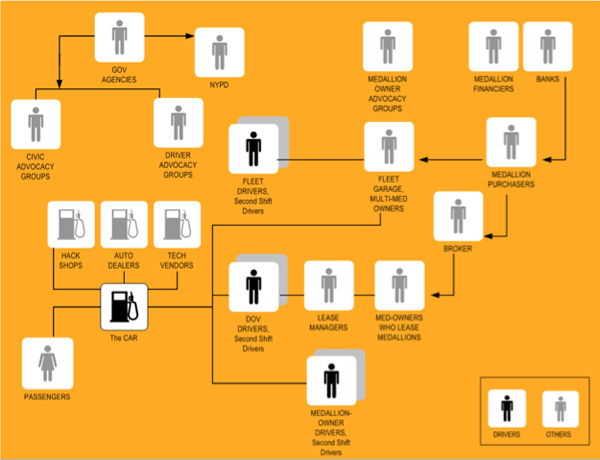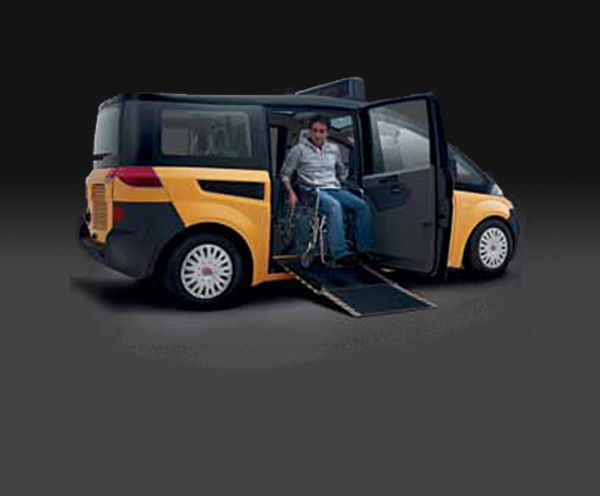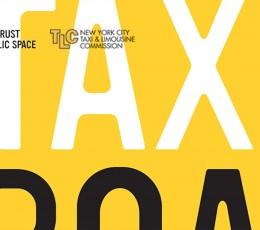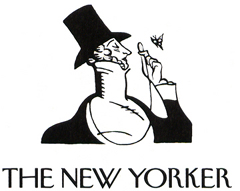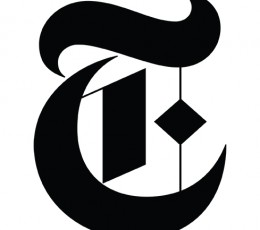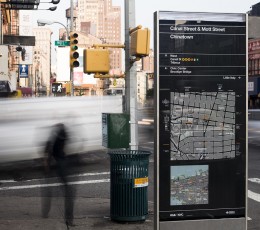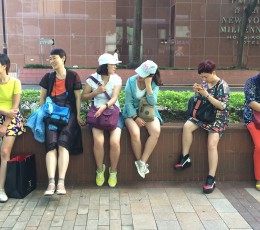Karsan’s bid to deliver the Taxi of Tomorrow
In spring 2010, Karsan, an established European auto engineering firm, bid to win New York’s $1bn Taxi of Tomorrow contract, to build, distribute and run a fleet of built-to-spec yellow taxis before Mayor Bloomberg leaves office in 2014.
Drawing from recommendations in Roads Forward: Taxi07, the winning vehicle must meet the City’s stringent requirements for safety, comfort, good value, fuel efficiency and standout look and feel.
In November 2010, Turnstone proudly reported that the City has shortlisted our client, Karsan, alongside Ford and Nissan for this bid. NYC then invited everyone to vote for their favorite option at this public survey. The only shortlisted car to follow the program specifications from scratch, Karsan’s proposed vehicle won New Yorkers’ vote!
Turnstone’s strategy for a connected cab
At the project kickoff, the City advised all the prospective bidders to read Taxi07:Roads Forward as reference. By inviting Turnstone to join their team, Karsan benefitted from the subject matter expertise of that report’s co-editor and Turnstone’s content strategy experience across digital and traditional media.
In every phase of our involvement with all-things-taxi, Turnstone has argued that envisioning tomorrow’s taxi should be thought of not simply as a vehicle design project but as an opportunity to improve a service. That means thinking through the intangible experiences of information and entertainment that defines the ride, the infrastructure for fueling and maintaining the fleet, as well as the mechanics and physicality of the car:
Designing a vehicle as a service experience
It’s also quicker and easier to program and tailor-make onscreen content than it is to roll out a fleet of cars. There’s more discussion of that in our recent articles, interviews and talks about technology, transit and service design.
Karsan differentiated their proposal from the competition with a cab for conversation, and demonstrates its understanding of the local economic, geographical and cultural context of a taxi in tomorrow’s NYC. The cab had to be both a New York icon, but also be fit for resale in other cities. How did Turnstone help Karsan meet all these needs in their response to the City? What role did digital media play?
Speculative design anticipates driverless cars
As shown in the slideshow above, some highlights of Turnstone’s proposed content+comms specifications:
– Coherent typography for the taxi exterior and interior, iconic and visible on the street, consistent on in-cab screens and static signage.
– Upgrades to the passenger-side screen: In addition to credit card payment functionality, an integrated system that displays a suite of integrated ride-relevant applications.
– Customization: An option for New Yorkers and visitors to pre-register online as NYC cab passengers, to set preferences and select content before they climb aboard.
– Location-based advertising: Programming GPS-enabled cabs’ ad screens to refresh en route, to display content to suit specific intersections, match billboards or reference nearby landmarks.
Taxi of Tomorrow vs. the yellow van of yesterday
The City announced in May 2011 that the contract would go to Nissan. Karsan announced its intention to take their proposed vehicle into production to go to market in several other global cities. Between then and now, the car manufacturers have been back and forth with the regulators in city, state and federal litigation to fight out whether the Taxi of Tomorrow program should go ahead.
In October 2013, the New York State Supreme court overturned the Taxi of Tomorrow program, ostensibly on account of municipal overreach. Confusing, since successive waves of one model (Checkers, Chevrolets, Crown Victorias) dominated the cab fleets, unperturbed by judicial rulings, til recently.
Gridlocked, but getting there
That the Taxi of Tomorrow vehicle of choice was neither wheelchair-accessible, nor hybrid and met with vociferous opposition from the disability lobby, no doubt played its part in the blocking of the program at various stages. While sense prevailed here and there – why bother mandating a single model if it doesn’t represent progress? – an almighty opportunity for service innovation, inclusive vehicle design and for green transit infrastructure for a global city looked to be heading to the scrapyard. As of 2015, Nissan’s retrofitted yellow car is on the road, alongside many other cabs, and yesterday’s taxi of tomorrow is an indistinguishable car hailed by smartphone.
That said, Karsan’s vehicle is also in production, for progressive markets overseas, and not just as a cab fleet model. It may yet return to NYC. And so, what Turnstone learned over 6 years covering the brakes, we already absorbed into other projects for public space: Progress is not linear, politics and innovation make strange bedfellows, automotive engineers need experience designers, and, to head in the right direction, Taxi of Tomorrow simply wasn’t radical enough.
In praise of Karsan’s taxi of tomorrow
- Turnstone’s Taxi07 Design Trust case study
- Turnstone’s full press release about the project shortlist (December 2, 2010)
- Paul Goldberger’s praise for Karsan in The New Yorker (May 3, 2011)
- Matt Flegenheimer on the City’s court ruling in the New York Times (Oct 9, 2013)
- Press about Turnstone’s taxi work
© Turnstone 2010-13, all rights reserved
